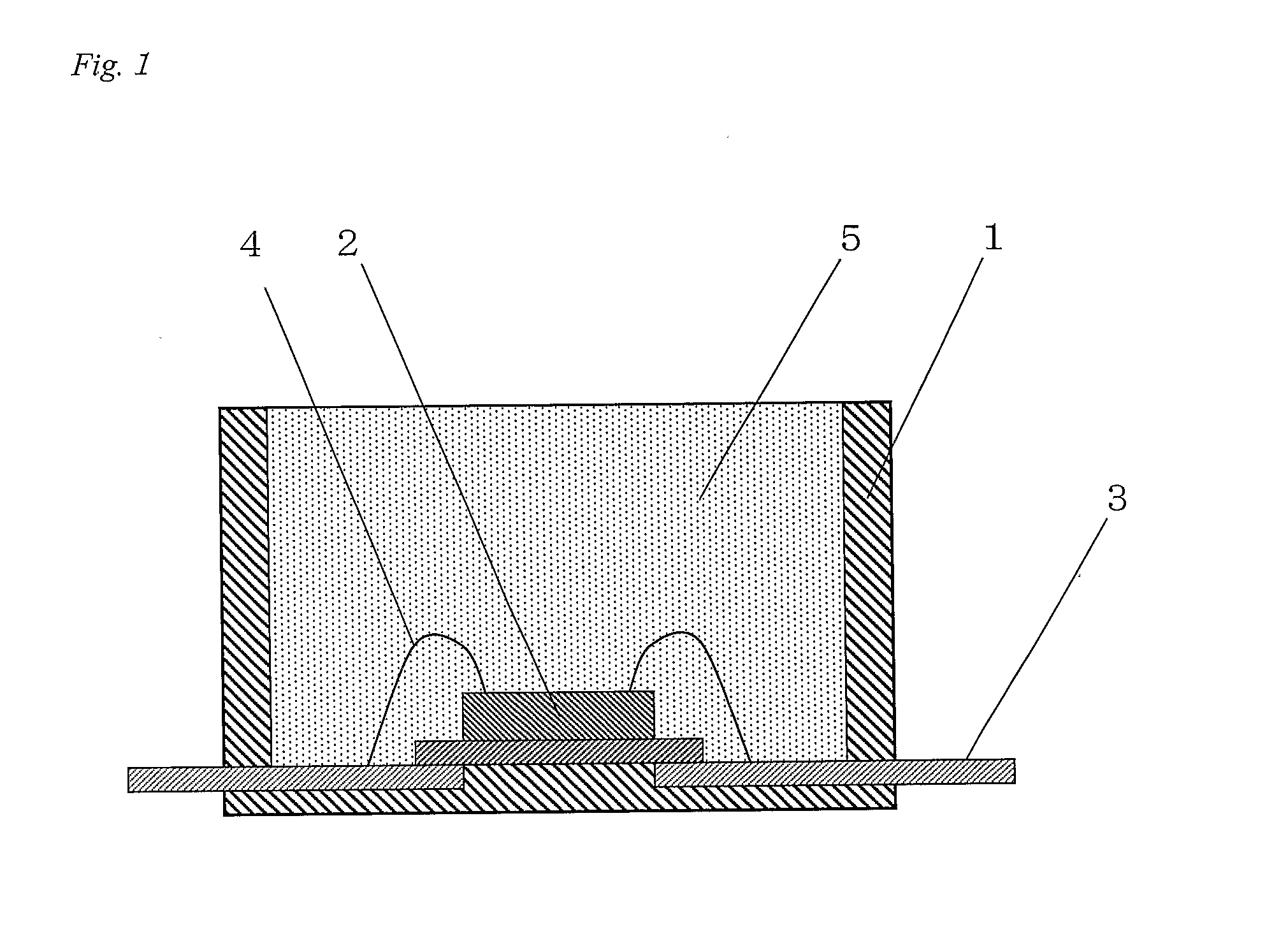Curable organopolysiloxane composition and semiconductor device
a technology of organopolysiloxane and composition, which is applied in the direction of semiconductor/solid-state device details, coatings, solid-state devices, etc., can solve the problems of low hardness, drop in transmissivity, and prone to scratching, and achieve excellent curability, high refractive index and optical transmissivity, and high adhesion.
- Summary
- Abstract
- Description
- Claims
- Application Information
AI Technical Summary
Benefits of technology
Problems solved by technology
Method used
Image
Examples
reference example 1
Preparation of Adhesion-Imparting Agent
[0080]50 parts by mass of toluene were placed in a reactor vessel. Subsequently, 19.3 parts by mass of n-butyl acrylate, 11.5 parts by mass of glycidyl methacrylate, 2.0 parts by mass of 3-methacryloxypropyltrimethoxysilane, 5.0 parts by mass of 3-methacryloxypropyl-tris(dimethylhydrogensiloxy)silane represented by the formula:
CH2═C(CH3)C(O)OC3H6Si[OSi(CH3)2]3,
and 2.0 parts by mass of 3-mercaptopropyltrimethoxysilane were added to dropping tank 1. In addition, 10 parts by mass of toluene and 0.275 parts by mass of 2,2′-azobis(isobutyronitrile) were added to dropping tank 2.
[0081]Next, after raising the temperature in the reactor vessel to 80° C., the above-described monomer mixture from dropping tank 1 and radical polymerization initiator solution from dropping tank 2 were added to the vessel in a dropwise manner over a period of 1 hour. The contents of the reactor vessel were kept at 100° C. for 6 hours. Subsequently, the temperature was raise...
practical examples 1 to 5
, Comparative Examples 1 and 2
[0082]Curable organopolysiloxane compositions were prepared by mixing the below listed components in the part by mass proportions indicated in Table 1. The characteristics of these curable organopolysiloxane compositions, the characteristics of the cured products obtained by curing these compositions, as well as the characteristics of the surface mount type light-emitting diodes (LEDs) fabricated using these compositions were evaluated in the above-described manner and the results were listed in Table 1.
(A-1): A methylphenylsiloxane-methylvinylsiloxane copolymer with both terminals of the molecular chain end-blocked by dimethylvinylsiloxy groups, represented by the average formula:
CH2═CH(CH3)2SiO[C6H5(CH3)SiO]26[CH2═CH(CH3)SiO]1Si(CH3)2CH═CH2,
which had a viscosity of 2,600 mPa·s and a mass average molecular weight of 4,800.
(A-2): A methylphenylsiloxane-methylvinylsiloxane copolymer with both terminals of the molecular chain end-blocked by dimethylvinyls...
PUM
| Property | Measurement | Unit |
|---|---|---|
| mol % | aaaaa | aaaaa |
| mol % | aaaaa | aaaaa |
| mol % | aaaaa | aaaaa |
Abstract
Description
Claims
Application Information
 Login to View More
Login to View More - R&D
- Intellectual Property
- Life Sciences
- Materials
- Tech Scout
- Unparalleled Data Quality
- Higher Quality Content
- 60% Fewer Hallucinations
Browse by: Latest US Patents, China's latest patents, Technical Efficacy Thesaurus, Application Domain, Technology Topic, Popular Technical Reports.
© 2025 PatSnap. All rights reserved.Legal|Privacy policy|Modern Slavery Act Transparency Statement|Sitemap|About US| Contact US: help@patsnap.com



